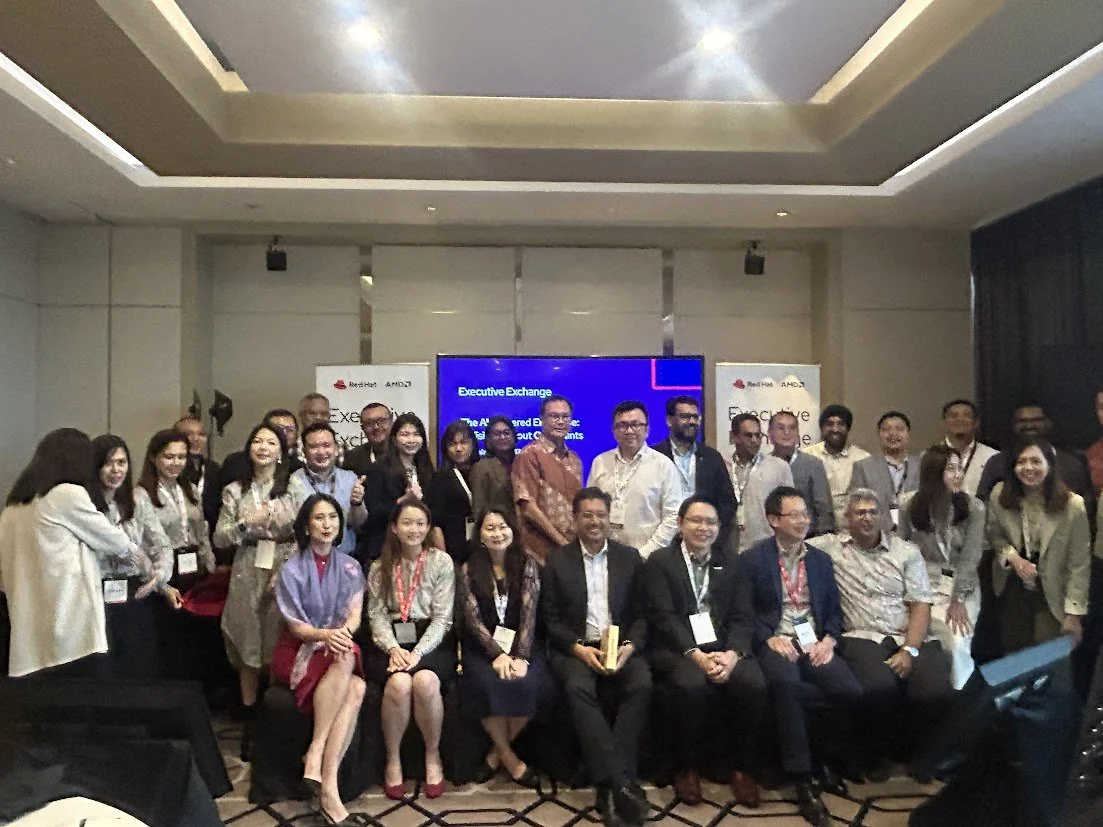From Potential to Performance: Scaling AI in Southeast Asia
Across ASEAN, national strategies point to a region in sync on ambition.
According to AIBP’s ASEAN Enterprise Innovation Survey, 78.5% of enterprises in the region are planning to make moderate to significant investments in AI. But as enterprises race to scale, many are finding that hype is not the same as readiness.
At recent executive roundtables convened by AIBP in partnership with Red Hat, leaders from across Malaysia and Indonesia examine what it takes to move from experimentation to execution and the trade-offs that come with it. Among them were Sam Majid, CEO of Malaysia’s National Artificial Intelligence Office; Winnie Wong, COO of Allianz; Handika Hakim of Bank Negara Indonesia (BNI); and Muhammad Arif Rahman Isma from Indonesia’s Ministry of Finance.
Putting Guardrails before Acceleration
For AI to scale responsibly, it must operate within a framework built on trust and accountability. This is especially true in complex, highly regulated sectors like healthcare, finance, and tobacco where missteps carry operational consequences, reputational and legal results. In such environments, national-level frameworks often require localisation and sector-specific nuance.
Malaysia’s National Artificial Intelligence Office (NAIO) takes on a three-pronged foundation for scalable AI: executive leadership buy-in, strong governance structures, and the ability to move swiftly from pilot testing to measurable value creation. But speed alone is not the goal.
“Imagine when you drive your car home and the brake pedal doesn’t work. Would you want to go faster?”
In Indonesia, the tension between innovation and regulation is just as visible. The risks compound in sectors where the margin for error is small.
“We want to ensure that what we deliver to our wholesale and retail partners is fully aligned with regulations”
PT Hanjaya Mandala Sampoerna Tbk, Indonesia’s largest tobacco firm, understands the weight of compliance. Operating in a tightly regulated space, their deployment of AI must align with both operational goals and external rules.
Transparency plays a key role in building that accountability.
Ultimately, guardrails serve a dual purpose of protecting enterprises from exposure, and customers from unintended harm. In the rush to scale AI, businesses that neglect this foundation may find themselves moving fast but without brakes.
“We always wonder—how did the AI come up with that recommendation? If two organisations deploy AI, will they get the same answer? That’s where transparency becomes critical”
Turning Constraints into Competitive Advantage
Better customer service starts with better intelligence. Rather than replace the human touch, AI is helping enterprises automate the routine so people can focus on what matters most.
For one of the world’s largest insurance and assistance companies, a major challenge was managing a contact centre that supported multiple industries and regions, each with unique needs. To handle the volume, they turned to voice AI. After training their bots, they reduced the need for three shifts of human agents.
“Something that used to be a constraint has now become an advantage. Customers say it’s like dealing with a very obedient child who always follows the rules”
Similarly, at CIMB, one of Malaysia’s largest banks, the journey to AI evolved naturally from its foundation in analytics. The shift was driven by the need to move from insight to action, using AI to help customers make better product decisions based on their profiles and behaviours.
“Cost optimization is definitely one of the key things everyone is looking at, but it’s not just about cutting costs. It’s about driving productivity.”
In a landscape where enterprises are expected to do more with fewer resources, AI is becoming the default co-pilot across tasks: responding to queries, analysing trends, and flagging anomalies.
Integration: The Real Backbone of Scalable AI
While AI is often discussed in terms of algorithms and infrastructure, scalability hinges on something more foundational: integration. For an institution with decades of accumulated data like banking, scaling AI requires weaving in cross-functional collaboration, cultural alignment, and strong data discipline. And that mindset shift is essential.
“This isn’t just a technology project. It’s about how you want to enrich your business by using something that’s already in your hands—20 years of data.”
As organisations move to digital platforms, inconsistencies in how data is stored and structured quickly become a problem. Even something as small as mismatched date formats can throw things off. In sectors like banking, poor data integration risks compliance and customer trust. Especially when handling personal and financial data.
For the team at Bank Negara Indonesia (BNI), they faced these realities head-on. Without the right infrastructure and internal alignment, early AI projects delivered underwhelming results and high costs. Rather than spreading AI too thin, the team focused on high-impact, clearly defined use cases: automating manual processes, reducing inefficiencies, and streamlining internal workflows. In some cases, they were able to reduce manual tasks by as much as 70%.
“It’s not just about the process. You’re breaking down the walls of bureaucracy. It’s like opening a Pandora’s box.”
The Real Work Ahead
AI, in its most effective form, is a shift in how organisations think, decide, and act. And like any transformation, it demands more of close discipline. Enterprises that succeed will be those that resist the temptation to scale prematurely, that build trust before algorithms, and that recognise AI is a capability that must be earned, governed, and strategically deployed.
When the rubber meets the road, the region’s AI race won’t be won by the fastest but by those who build with brakes as well as engines.


